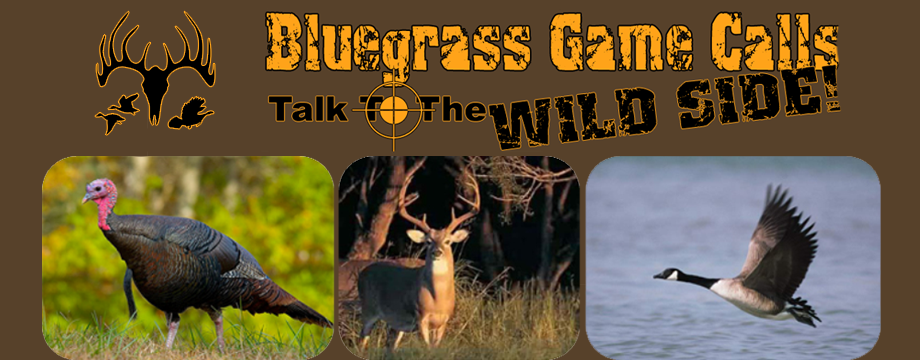How To Take Care Of Your Game Calls
Wood Game Calls
The heart of our calls are natural wood with a hand rubbed cellulose sealer and finish of shellac and beeswax. The finish is water repellant but wood in any circumstance is susceptible to moisture. Care should be taken when using your call during inclement weather. Hunting is hunting and bad weather is just a fact of life. After use, thoroughly dry your call and use a quality wax on the wood surface and the interior of barrel and stopper calls. Never use oil as it may tend to swell the wood.
Friction Calls-Slate/Glass/StrikersThe slate or glass surface of a turkey call should be lightly rubbed or conditioned with 80 grit sandpaper. Always sand in one consistent direction. Never touch the slate surface with your fingers, oils or waxes, as the performance and sound of the call will be effected. The tip of the striker should be treated the same as the slate surface. The tip is provided rounded but can be sanded to your preference by again using 80 grit sandpaper and should be occassionaly touched up for best sound.
Reed Calls-Barrels, Stoppers & Guts
The call is composed of three parts…barrel, stopper and guts. The barrel is the largest and the part that you blow through, acting as an air chamber. The stopper plugs into the barrel with a snug fit often provided by o-rings. It is possible for the o-rings to break but they can easily be found at your local hardware store. Never use your call without the o-rings as it is possible for the stopper to fallout…and it will in the worst locations. The guts assembly is plugged into the stopper and creates your call’s sound. The guts are synthetic and extremely durable. The guts of the deer grunt tube is adjustable for tone and pitch by simply moving the small o-ring up or down the reed. Location of the o-ring closer to the stopper will yield the deep tone of a mature, dominant buck; while moving the o-ring away from the stopper creates the higher pitch of a doe or fawn bleat. From time to time it may be necessary to tune or adjust the guts of your call. Care should be taken to not lose any of the parts. Typically all that is needed to tune your call is to insure that the reed is flush with the rear of the sound board. Inserting the small wedge may cause the reed to shift and care should be taken to not insert with too great of force, as this can distort the reed.
Practice With Your Game Call
Every Bluegrass Game Call is handcrafted and therefore unique. Wood type and density play an important role in the sound as well…but so do you. Practice with your call until it becomes second nature. The last thing you want to happen is to be pulling in that Big Tom and expect to cluck or purr and give him a squeak or squeal.

